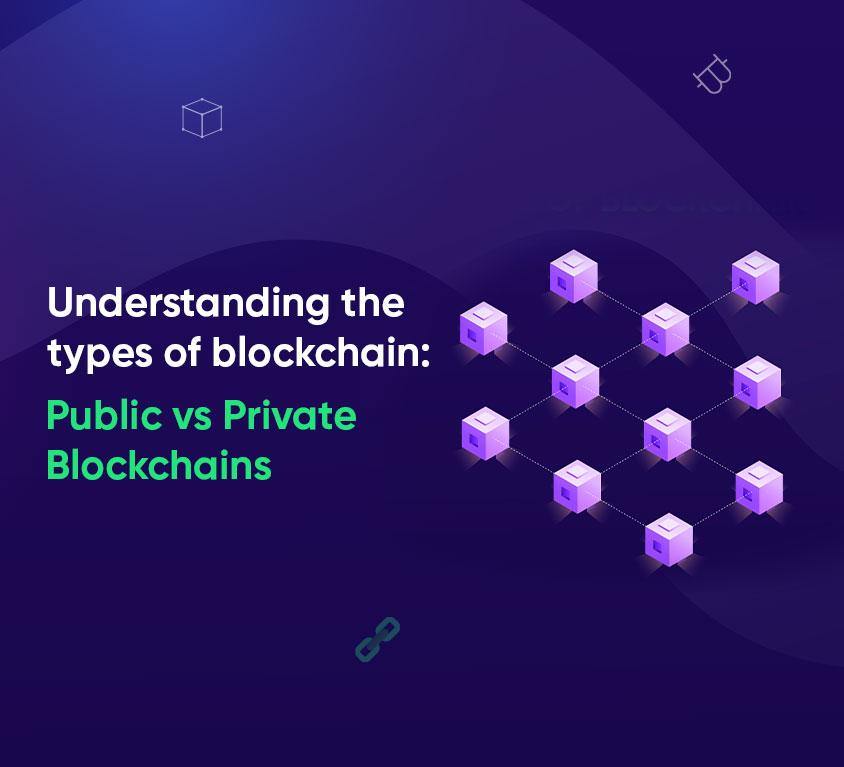
Introduction
Web3 & Blockchain Consultancy :
Understanding the types of blockchain: Public vs Private Blockchains
Technology can disrupt nearly every industry, including financial services, healthcare, and cybersecurity. Blockchain is a distributed digital ledger that records transactions across a network of computers, but no single person or entity controls the system. Bitcoin is the first and most prominent application of blockchain technology, but many other industries have embraced this method. This blog discusses the different types of blockchains, including public vs private blockchains. We will also delve into the process of developing blockchain solutions and how various industries use them.Public blockchains – what are they?
A decentralized, distributed ledger that allows the creation and execution of smart contracts and enables the transfer of digital assets without the need for a central authority or intermediary. It is open-source, and anyone can participate in a public blockchain network and access its data, making it open and transparent.How do public blockchains work?
A public blockchain allows multiple participants, or nodes, to participate in the network and maintain a copy of the ledger. Each node has a copy of the blockchain, which records all the transactions on the network.- When a new transaction is proposed, it is broadcasted to all the nodes on the network.
- These nodes then verify the transaction and group it with other transactions into a block.
- The block is then added to the existing blockchain through mining.
- The first node that solves the problem is rewarded with a small amount of digital currency, ensuring that the blockchain remains secure and tamper-proof.
- Once the block is added to the blockchain, it cannot be altered or deleted.
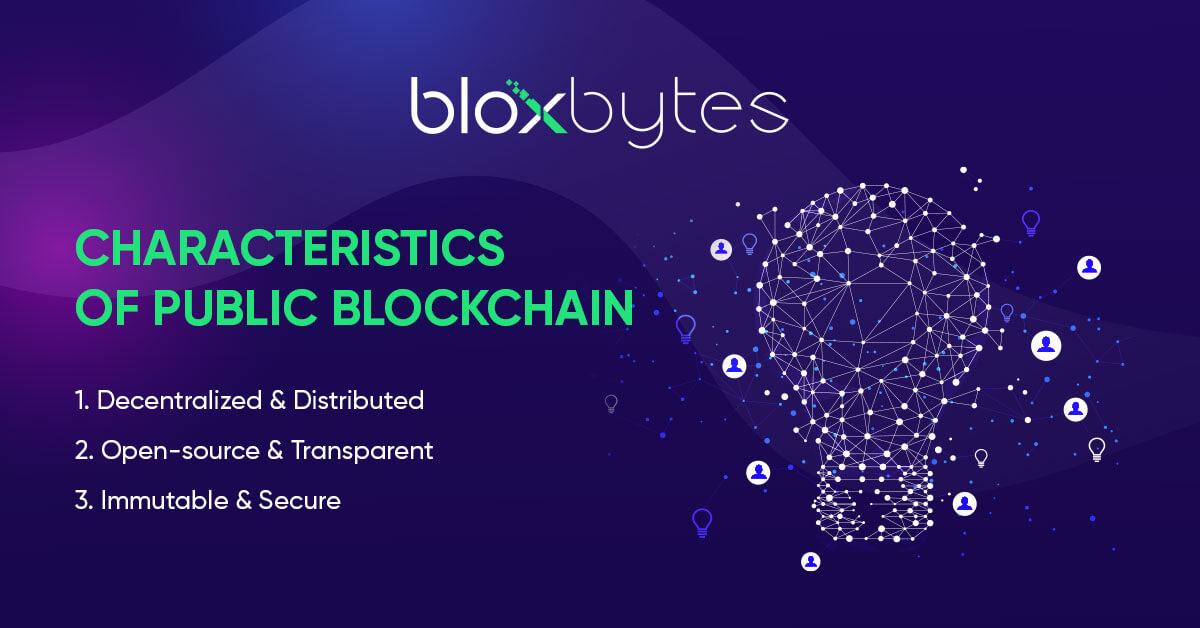
Examples of the public blockchain:
Bitcoin:
The first and most well-known public blockchain, Bitcoin, is a digital currency that allows for peer-to-peer transactions without third-party involvement.
Ethereum:
A public blockchain that allows for the creation and execution of smart contracts in addition to digital asset transfer. It is often used for decentralized applications (dApps) and for creating new digital assets through Initial Coin Offerings (ICOs).
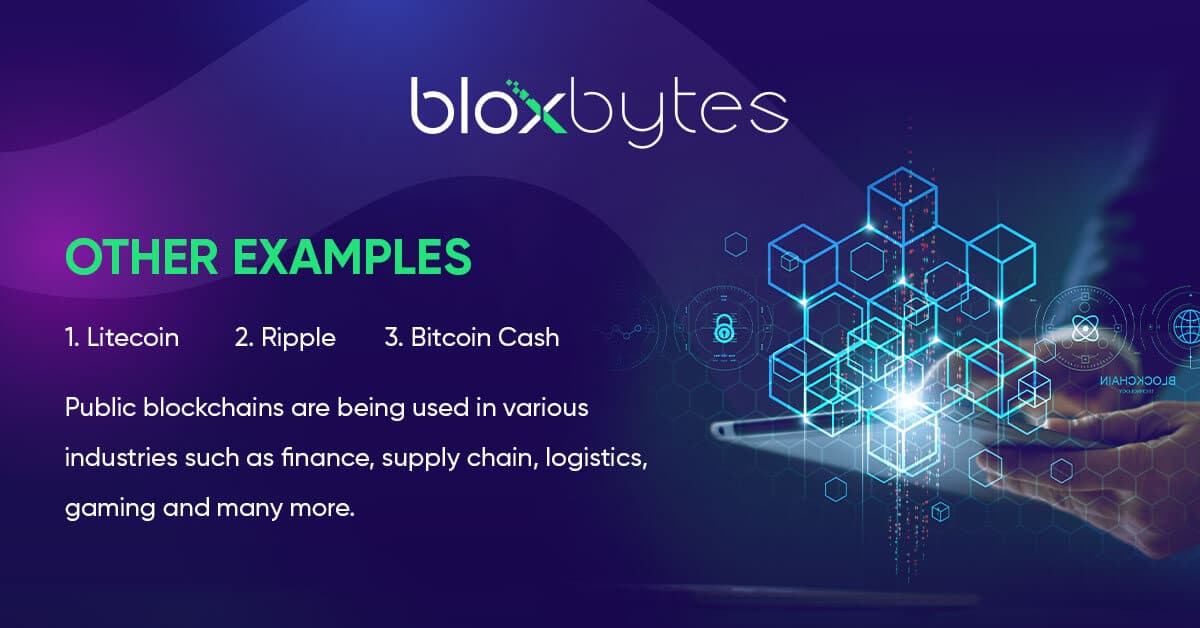
Use cases of Public Blockchain in different industries
Financial services:
Public blockchains can be used to facilitate peer-to-peer transactions, such as money transfers, without the need for a central authority. This type of blockchain can be used to create DEX for digital trading assets.
Supply chain management:
Public blockchains can be used to create a tamper-proof and transparent record of the movement of goods through a supply chain. This can help to increase transparency and efficiency in the supply chain.
Identity verification:
Public blockchains can be used to create decentralized systems for identity verification, allowing individuals to control their own personal data and share it with organizations as needed.
Gaming:
Public blockchains can be used to create decentralized gaming platforms, where players can own and trade in-game assets in a transparent and secure way.
Voting:
Public blockchains can be used to create decentralized voting systems that are tamper-proof and transparent, increasing trust in the voting process.
Private Blockchains – What are they?
Private blockchains are permission blockchains. There are only a few participants in the blockchain network who can access the data on the blockchain. Moreover, an authority controls who can participate and at what level, and at what level they have access to the network. As a result, private blockchains are more suitable for enterprise and consortium applications.How do Private Blockchains Work?
A private blockchain is similar to a public blockchain in that it records transactions in blocks linked together in a chain. There are, however, a few key differences.- A central authority controls access to a private blockchain called a consortium, determining how access to the network is granted to participants.
- Consortium gives permission using digital identities and access control lists (ACLs).
- When permission, the participants can join the network and maintain a copy of the ledger.
- Participants can propose new transactions which are broadcast to all nodes on that same network.
- Nodes on the network verify transactions, grouping them into blocks that are added to the existing blockchain through a consensus algorithm.
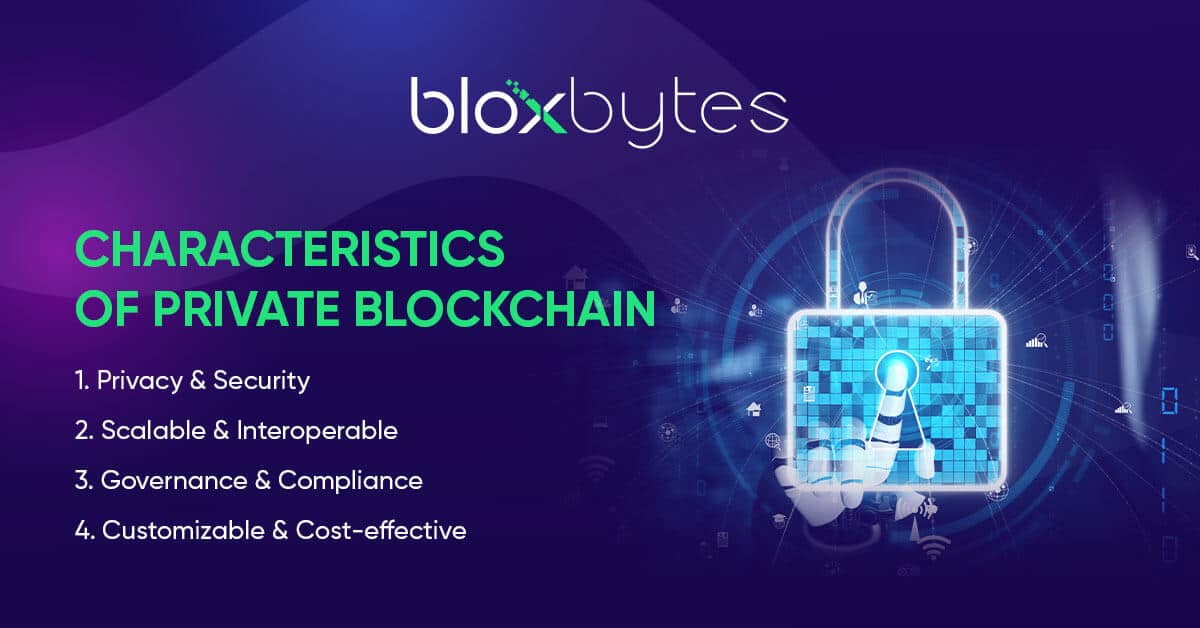
Examples of the private blockchains
Hyperledger:
An open-source blockchain platform created by the Linux Foundation, Hyperledger is designed for enterprise and consortium use cases. It offers several frameworks, including Hyperledger Fabric and Hyperledger Sawtooth, which can be used to create private blockchains.
Corda:
An open-source blockchain platform specifically for financial services. It is a permission blockchain that allows for the creation of smart contracts and the execution of complex financial transactions.
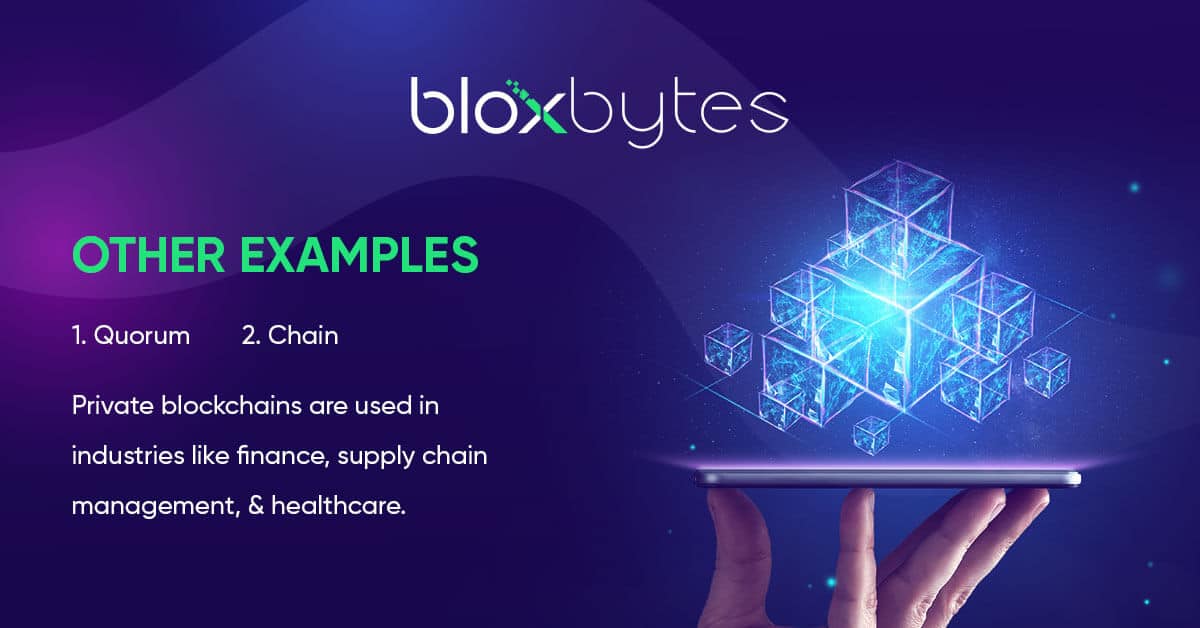
Public vs Private Blockchains
Both are decentralized, distributed ledgers that record transactions in blocks linked together in a chain but have some key differences;
Private Blockchain |
Public Blockchain |
|---|---|
|
|
|
|
|
|
|
|
|
|
|
|
Other types of blockchains
There are many other types of blockchains but two of them are;- Sidechain
- Layer 2 Blockchain
Sidechain:
A sidechain is a separate blockchain attached to a main blockchain. This type of blockchain allows the transfer of assets between the two chains. As a result of using this blockchain solution, companies can get increased scalability, interoperability, and flexibility. Sidechains are connected to a main blockchain, often called the parent chain, through a two-way peg. The two-way peg allows asset transfer between the sidechain and the parent chain. It also enables the sidechain to have its own set of rules and consensus mechanisms.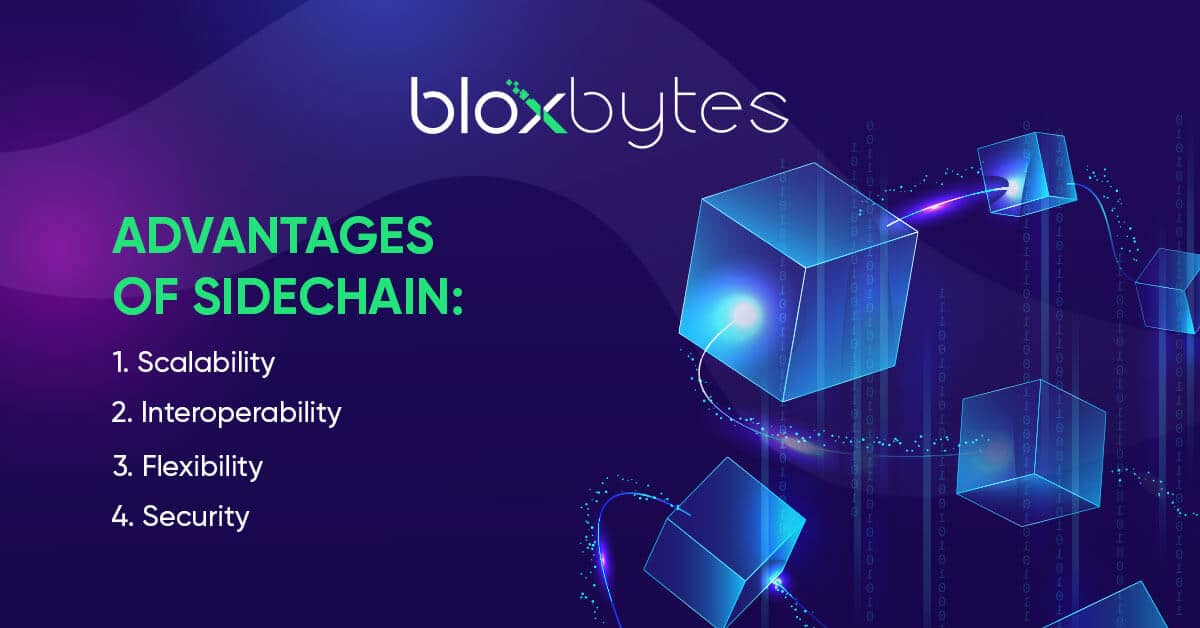
Layer 2 Blockchain Solution:
Layer 2 blockchain solutions are protocols built on top of existing blockchain networks, such as Bitcoin or Ethereum. This blockchain solution particularly aims to increase scalability and reduce transaction costs. Layer 2 blockchains work by offloading some of the computational work from the main blockchain to a secondary layer. As a result of this blockchain development companies can get faster and cheaper transactions without compromising security.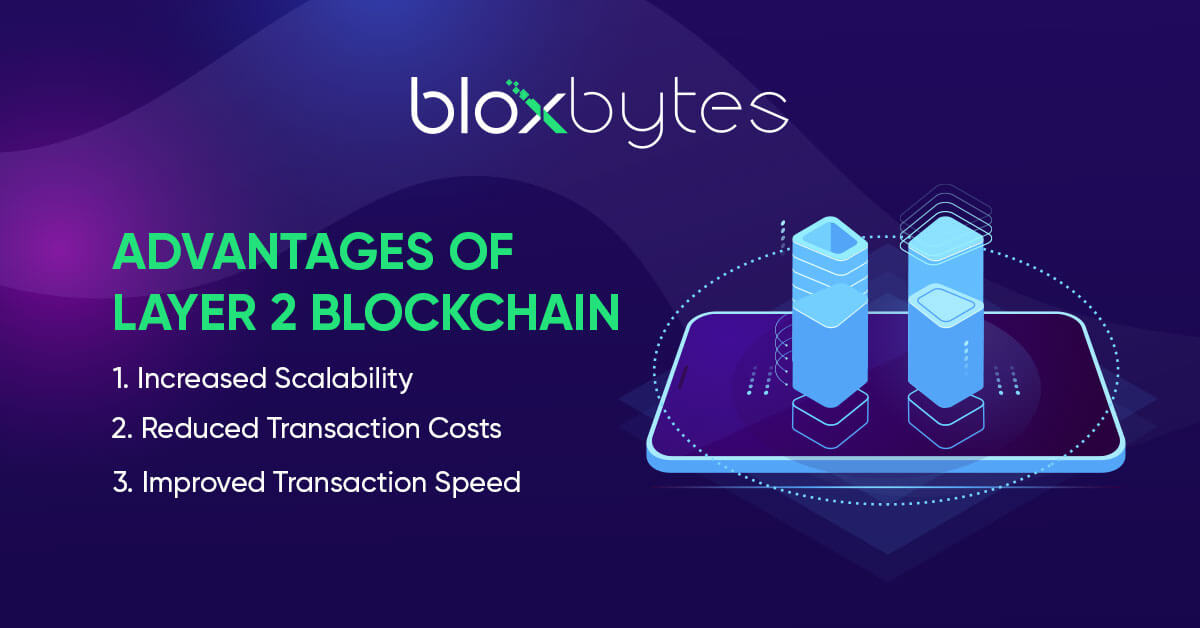
Overview of Blockchain Development
Developing blockchain refers to the process of designing, building, and deploying decentralized, distributed systems using blockchain technology. This process includes creating smart contracts, designing decentralized applications (dApps), and integrating blockchain into existing systems.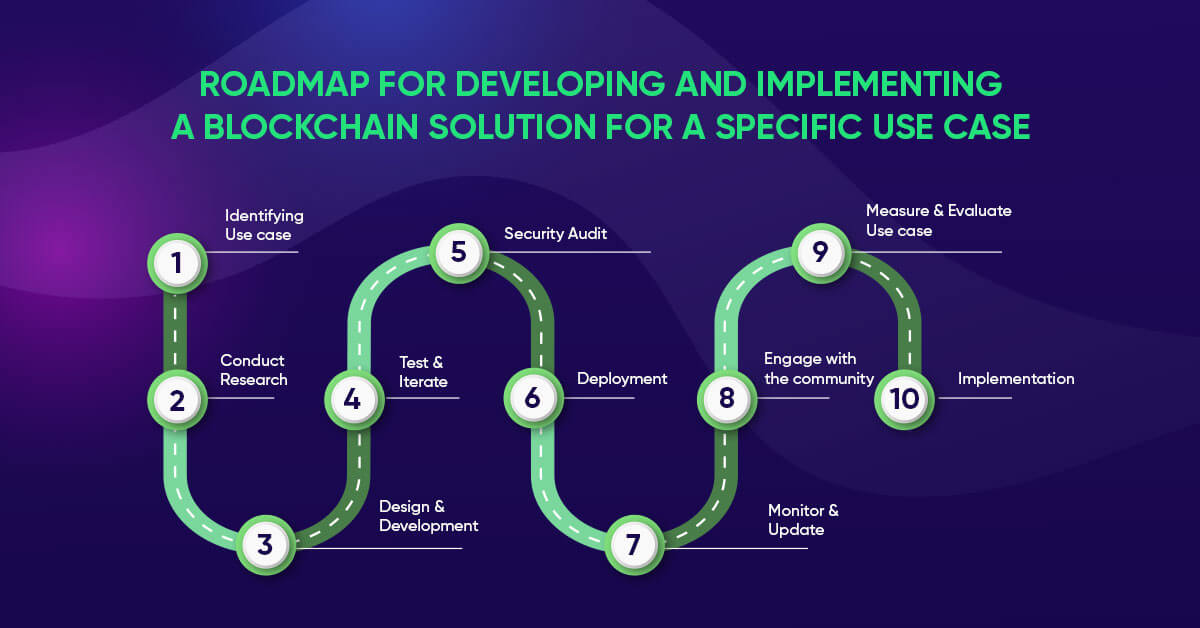
How we Develop a Blockchain Solution
- We initiate by clearly defining the problem you are trying to solve and how blockchain can help solve it.
- Then we do extensive research and choose the appropriate blockchain platform for your solution.
- By understanding the limitations and scalability issues of the blockchain platform you choose, we consider the security and privacy implications of your solution.
- We then, test and iterate on your solution before deploying it.
- We continuously monitor and update your solution to adapt to changes in the blockchain ecosystem.
- We also engage with the community to understand the best practices and lessons learned by other developers.